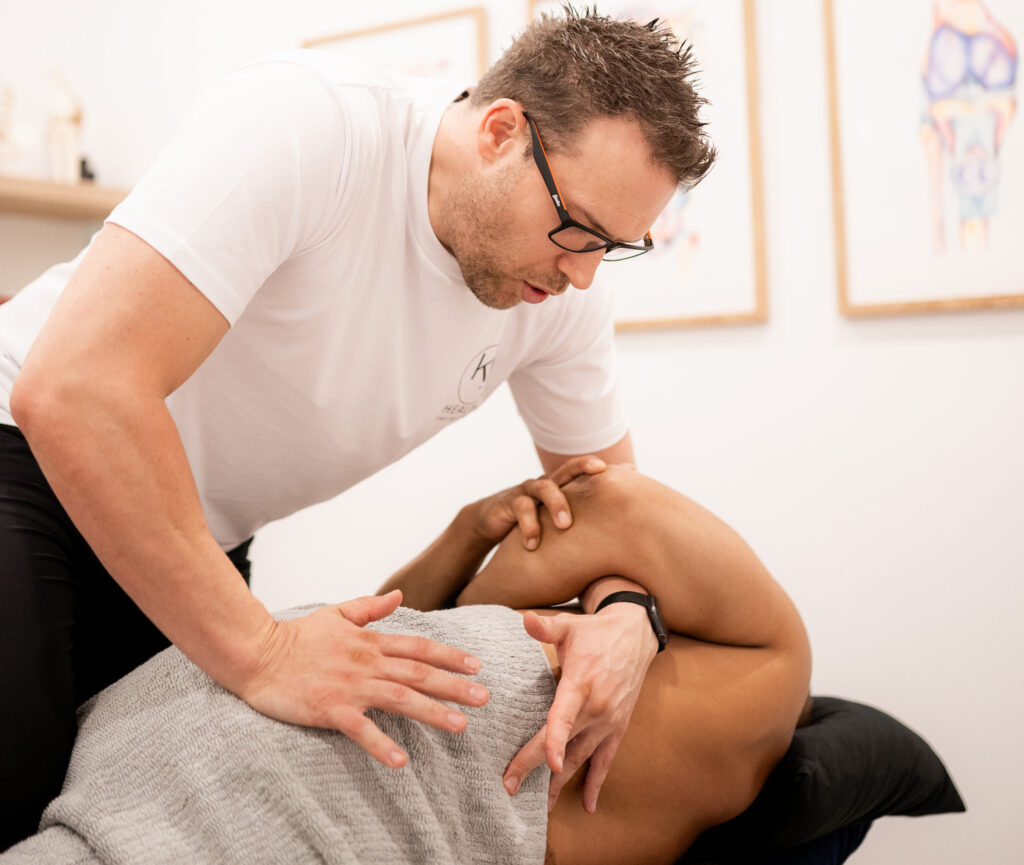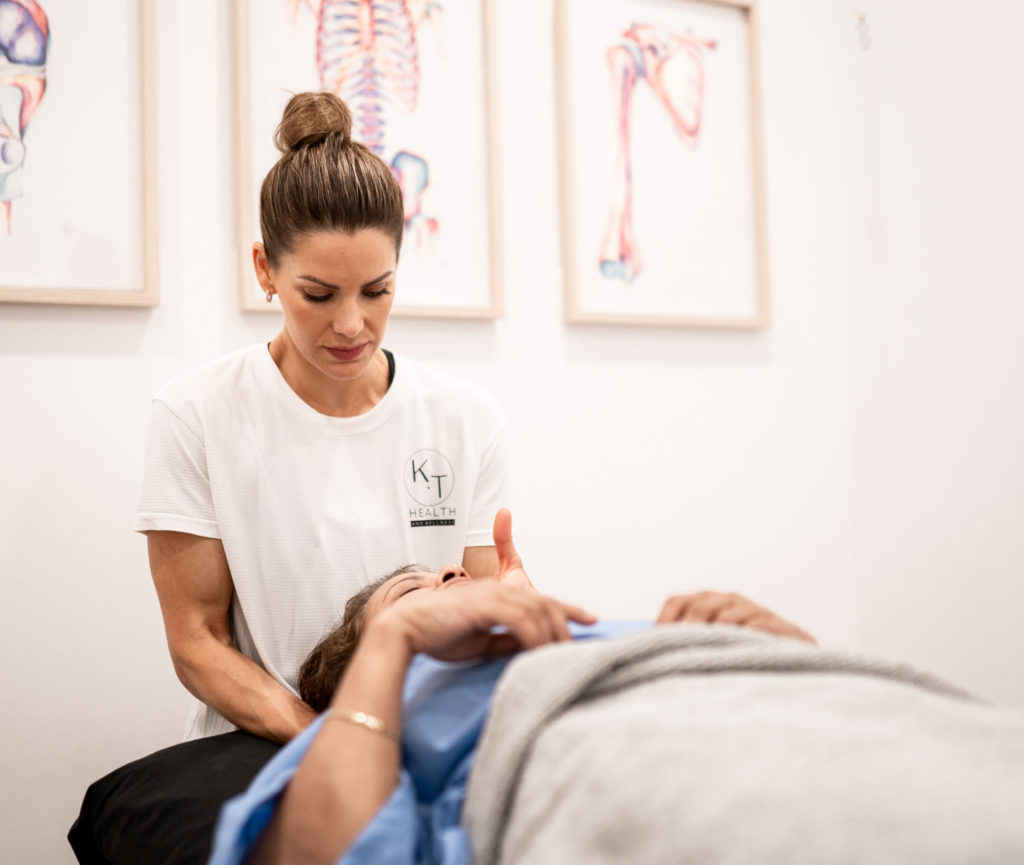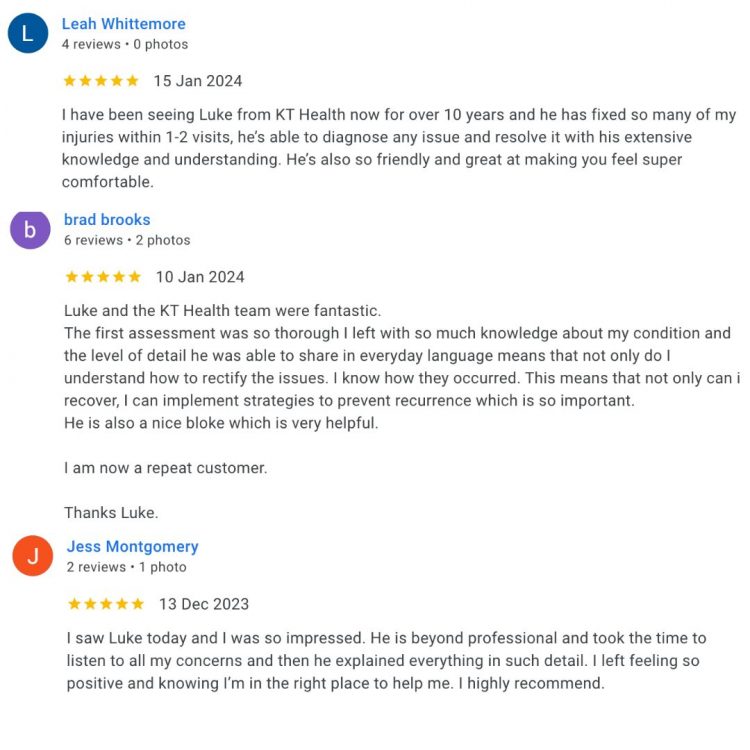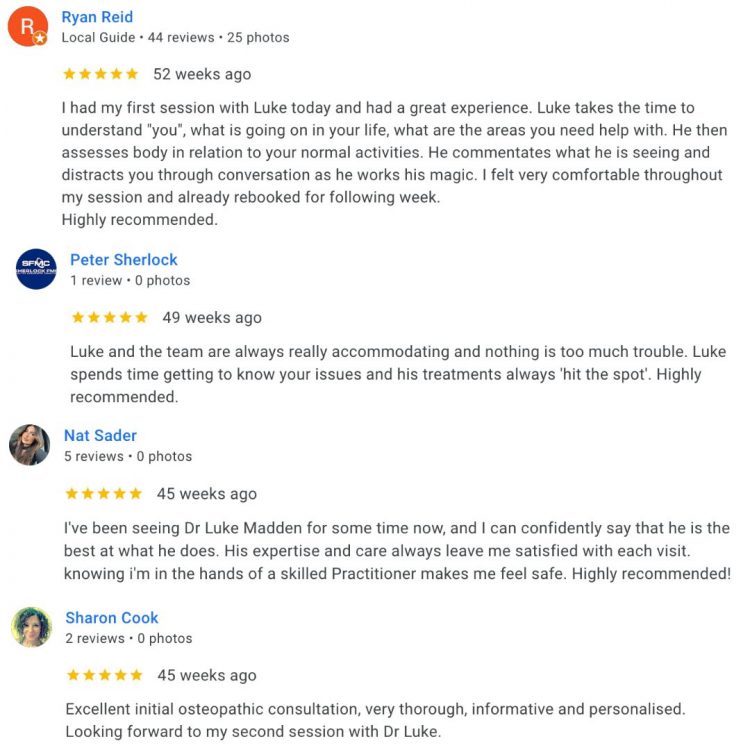Everything You Need to Know About a Thoracic Disc Bulge
What is a Thoracic Disc Bulge?
A thoracic disc bulge is when one of the cushion-like discs between the bones in your mid-back (thoracic spine) pushes outward from its normal position. This bulge can irritate nearby nerves, joints, or even the spinal cord, leading to pain, stiffness, or strange sensations in the back or chest. Thoracic disc bulges are less common than neck or lower back disc injuries but can still cause significant discomfort.
An analogy…
Think of a spinal disc like a jam doughnut between two building blocks (your vertebrae). If you squish the blocks unevenly or too hard, the jam inside pushes out. A disc bulge is like the jam pushing out to the side, if it touches a nerve, it causes pain or other symptoms.
What are other names that a thoracic disc bulge can be referred to?
Thoracic Disc Herniation, Slipped Disc, Prolapsed Disc, Bulging Disc, Herniated Disc, Intervertebral Disc Injury, Sprained Disc
What causes a thoracic disc bulge?
Each disc in your spine has a tough outer layer and a soft, jelly-like centre. When pressure builds up, from repetitive stress, poor posture, injury, or ageing, the outer layer can weaken or crack. This allows the centre to bulge outward, sometimes pressing on spinal nerves or the spinal cord. In the thoracic spine (your mid-back), this often happens between T7 and T12, where there’s more movement and load compared to the upper thoracic spine.
What are the signs and symptoms of a thoracic disc bulge?
- Dull or sharp mid-back pain
- Stiffness in the thoracic spine
- Pain that wraps around the ribs or chest
- Pain made worse by sitting, twisting, or lifting
- Tingling, numbness, or burning in the chest or back
- In severe cases, difficulty breathing, weakness, or signs of spinal cord compression (rare)
What tests are used to diagnose a thoracic disc bulge?
Thoracic Nerve Root Tension Tests: These are physical tests a practitioner may use to check if a thoracic nerve is irritated or compressed. The tests involve moving the spine or limbs in specific ways to stretch or tension the nerve roots. If this reproduces pain, tingling, or numbness, it suggests the nerve may be affected by a disc bulge or inflammation.
How long does a thoracic disc bulge take to heal?
With proper treatment, mild to moderate thoracic disc bulges usually improve within 2–6 weeks, though healing may take longer if the bulge is large or compressing a nerve. A gradual return to full activity is important to prevent flare-ups or further injury.
How does a thoracic disc bulge happen?
- Poor posture (especially slouching at a desk or driving)
- Repetitive bending, lifting, or twisting
- Weak core and postural muscles
- Trauma or injury
- Age-related disc degeneration
- Sports with rotational movements
What treatment can help a thoracic disc bulge?
- Manual therapy and joint mobilisation
- Postural correction and ergonomic advice
- Pain relief (ice, heat, medication as needed)
- Stretching tight muscles and strengthening weak ones
- Gentle thoracic mobility exercises
- Core stability and Clinical Pilates
What exercises or stretches can I do for a thoracic disc bulge?
- Thoracic extensions over a foam roller
- Wall angels
- Child’s pose and cat-cow stretch
- Rib cage breathing
- Core activation and glute bridges
What products can help with a thoracic disc bulge?
Segmental thoracic extension stretch with towel
Roll up a towel and place it on the floor across the area you will lie on. Lie on your back with the towel positioned underneath and across your upper back. Relax in this position, allowing your arms to drop out to the side and your chest to open up, stretching your upper back over the towel. Remain here for the stated duration, and then move the towel down to the next segment of you upper back, and repeat.

Bird dog
Start on your hands and knees, with your hands under your shoulders, and knees under your hips. Tighten the abdominal core muscles. Extend the opposite leg and the opposite arm simultaneously, making sure your maintain good control in your torso. Do not allow your body or hips to rotate. Repeat on the other side.

Seated trunk rotation
Sit upright in a chair and rotate your body round to one side, using your arms on the back of the chair to pull yourself round further. This should feel like a stretch through the torso.

Prone trunk extensions
Lie on your front with your arms by your side. Lift your head and chest off the floor as far as you can using the strength of your lower and upper back muscles. Lower your head and chest back down in a controlled manner and then repeat.

STOP GUESSING – START MOVING
See what other people have said about our osteopaths
Trustindex verifies that the original source of the review is Google. KT health has really helped my back and i have been able to get back into competitive sportTrustindex verifies that the original source of the review is Google. Absolutely amazing, I see Louie Nouh who always listens and caters to my needs. He is amazing at his job and always helps alleviate my pain. I highly recommend Louie.Trustindex verifies that the original source of the review is Google. Friendly, supportive staff. Such a lovely place to exercise! Highly recommend.Trustindex verifies that the original source of the review is Google. Amazing instructor, I am new to Pilates felt very comfortable & supported.Trustindex verifies that the original source of the review is Google. I have been suffering from shoulder and neck pain for months - I saw Dr Louie Nouh a couple of time. His treatment really relived the pain. I have full range of movement now. His knowledge on exercise is fantastic.Trustindex verifies that the original source of the review is Google. Absolutely love reformer at menai. Instructors are amazing. Love Michaela and love the small classes. Highly recommend!Trustindex verifies that the original source of the review is Google. The trainers are all amazing , they explain everthing step by step and help where needed . It is an amazing place to relax get to know other people have a laugh . I recommend for anyone .Trustindex verifies that the original source of the review is Google. Ever since I came here I’ve been looked after by Louie and my shoulder is already feeling much better. Highly Recommend these are good people.Trustindex verifies that the original source of the review is Google. SENSATIONAL Chiropractor in Menai! I attended my first appointment with Dr Louis Nouh at KT Health & Wellness who is an absolute genius even after one session with him. He explained everything he intended to address about my lower back condition, all in easy to understand, layman’s terms. He said he would call me the next day to follow and see how I was feeling after our session and guess what, he did! During our session, he made me feel relaxed and comfortable especially as it was my first chiropractic appointment EVER! For some reason, I am actually looking forward to my subsequent sessions with him next week. Don’t get me wrong, he did poke, prod and crack me as necessary but the results made it seem worth it.Trustindex verifies that the original source of the review is Google. I have been seeing Melinda now for a couple of months to help with bursitis in my hip. She is one of the best practitioners I’ve ever seen.. With the use of various tools and techniques she has helped me recover much quicker than I expected. Thanks Mel and see you tomorrow!
We don't offer magic fixes or cures, but a sustainable approach to back pain.
Our Osteopaths will offer you a road map to help you take control of your back pain and feel great again.
BOOK YOUR OSTEOPATH VISIT TODAY
Book a Time with Dr Luke Madden Below
Book a Time with Dr Melinda Madden Below
Already have an account?
Book as a guest
- Book an Appointment






